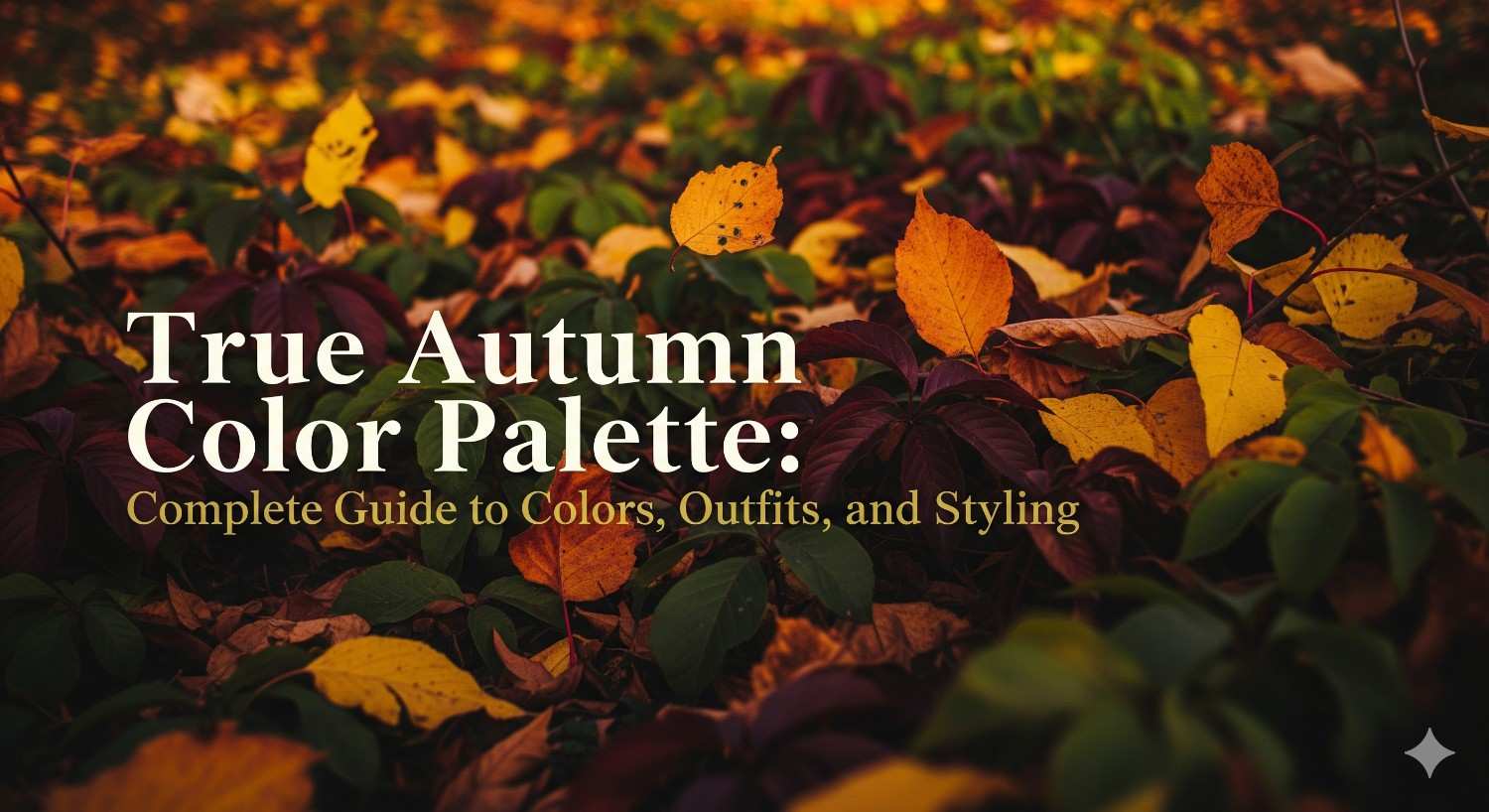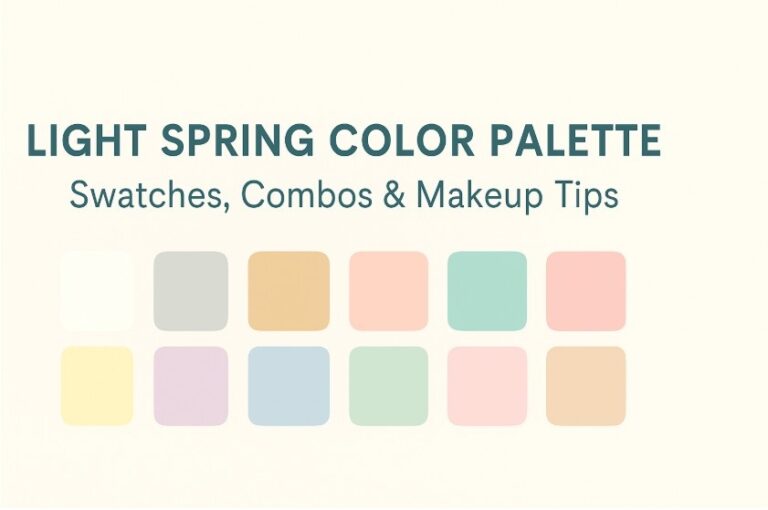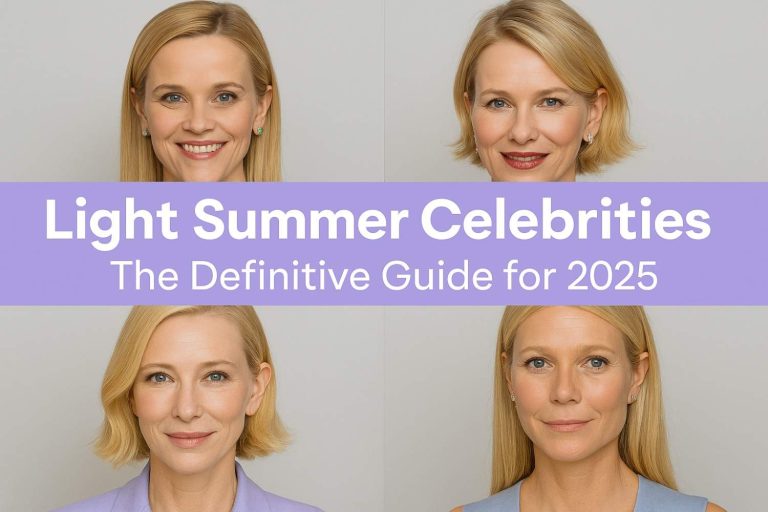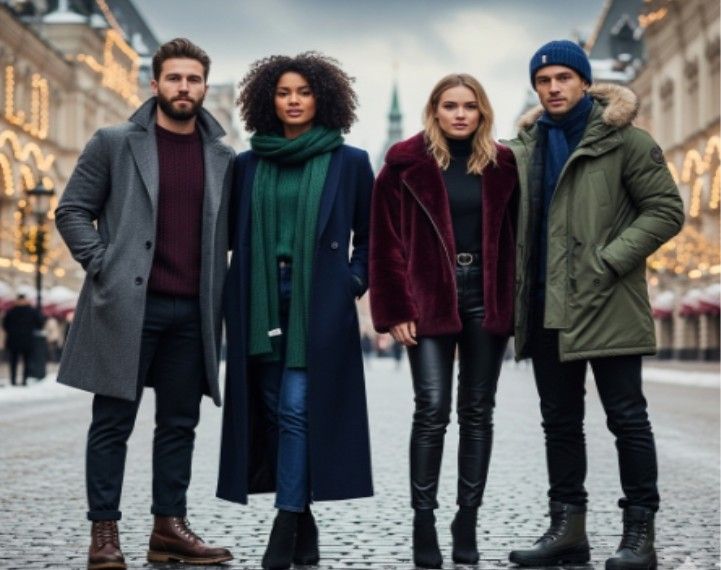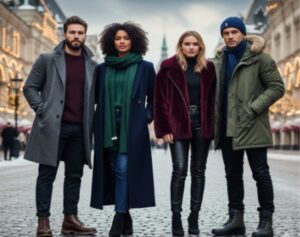When I first learned about seasonal color analysis, I had no idea why some clothes made me glow while others washed me out. It wasn’t until a stylist told me I belonged to the true autumn color palette that everything clicked. Suddenly, rust sweaters, camel coats, and olive pants became my secret weapons—and black, which I used to wear constantly, just didn’t feel right anymore.
If you’ve ever felt the same way, this guide will help you understand what makes the True Autumn palette so unique and how you can use it to look your best every day.
What Is the True Autumn Color Palette?
The True Autumn palette belongs to the 12-season color system, sitting right in the middle of the autumn family. Sometimes called Warm Autumn, it is characterized by warm, rich, and earthy tones. Think of the colors you’d see on a crisp October day—burnt orange, golden leaves, deep moss, and spicy browns.
True Autumns usually have golden or peach undertones in their skin, warm eye colors like hazel or green, and hair that ranges from golden blonde to chestnut brown or auburn. The harmony comes from warmth: nothing icy, nothing muted gray, just a glow of golden richness.
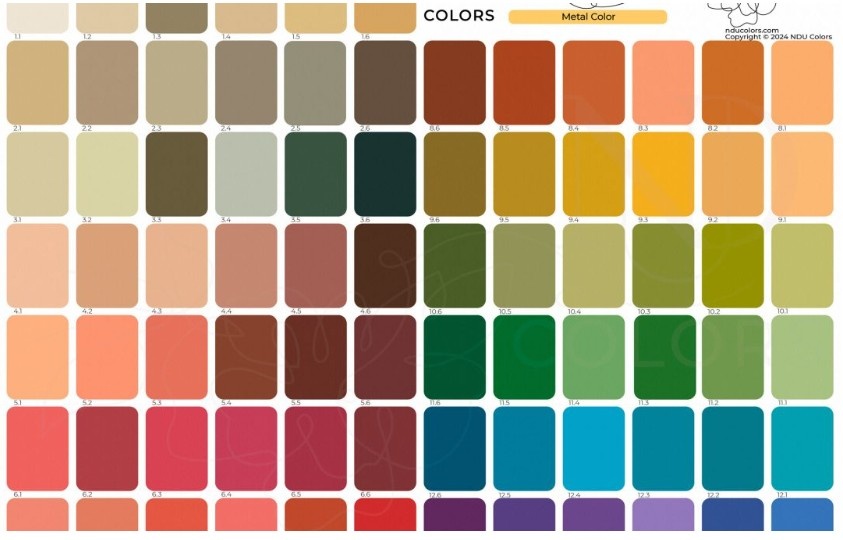
Image Source: Rachel Nachmias
Core Characteristics of the True Autumn Palette
The true autumn color palette is built around shades that feel like a golden fall afternoon. Every hue carries a warm, yellow-based undertone, giving the entire palette a golden glow. Unlike cooler palettes, there’s no trace of icy blue or gray. Instead, the colors are soft, rich, and earthy—balanced between too dark and too light.
- Reds & Oranges: Rust, terracotta, copper, burnt orange, and salmon.
- Yellows & Golds: Mustard, ochre, cornmeal, and goldenrod.
- Greens: Olive, moss, teal, and forest green.
- Neutrals: Chocolate brown, deep tan, cream, warm beige, and taupe.
These shades aren’t overly bright or sharp. They have a medium depth—enough to look rich without overwhelming. Imagine autumn leaves, spiced cider, or a golden sunset—that’s the essence of True Autumn.
Colors to avoid:
- Cool tones like icy blues, greys, or pastel pinks clash with warm undertones.
- Overly bright shades like neon overwhelm the muted warmth of True Autumn.
- Pure black and white are too stark. Swap them for chocolate brown and ivory to maintain harmony.
Which Colors Work Best in the True Autumn Palette?
The best colors for True Autumn lean toward warm, medium to deep shades with a grounded, earthy quality. Instead of stark contrasts, this palette thrives on harmony.
- Main colors: Rust, terracotta, golden yellow, mustard, olive green, warm teal, and tomato red.
- Neutrals: Camel, warm beige, ivory, chocolate brown, and warm navy.
- Accent shades: Turquoise, moss, copper, and pumpkin orange.
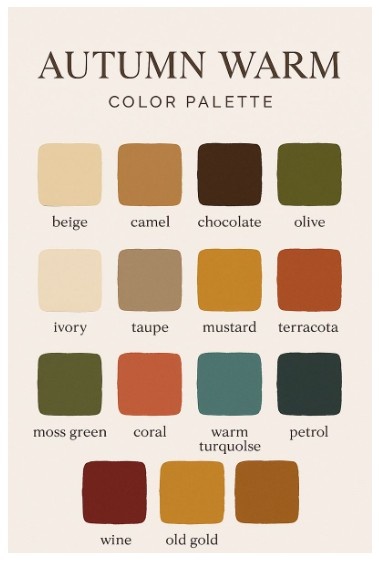
Image Source: Pinterest
How Does True Autumn Differ From Soft or Deep Autumn?
This is one of the most common points of confusion. While all three autumn subtypes share warmth, each has a different emphasis:
- True Autumn (Warm Autumn): The baseline—rich, earthy warmth without too much depth or softness.
- Soft Autumn: More muted, with colors that are less saturated and slightly grayed.
- Deep Autumn: Richer and darker, leaning closer to winter shades like deep olive or dark teal.
If you try on a color and it feels too dark or too muted, you’re probably closer to True Autumn than the other subtypes.
What Neutrals Replace Black for True Autumn?
For years, black was my default. But once I started dressing in the true autumn color palette, I discovered how much better other neutrals looked. Instead of making me look pale, these tones brought out warmth in my skin and eyes.
- Chocolate brown is the best substitute for black.
- Camel and caramel work beautifully for outerwear and accessories.
- Ivory and cream replace white in blouses and tees.
- Warm navy adds depth without looking harsh.
How Do You Build Outfits With the True Autumn Palette?
The easiest formula I’ve found is this: one warm neutral + one earthy hero color + one accent.
For example: camel trousers (neutral) + rust sweater (hero) + turquoise scarf (accent). This formula keeps outfits balanced and lively without overwhelming you.
If you prefer minimalism, build a capsule around camel, chocolate, olive, and ivory. Add accents like mustard or teal when you want more personality.
Makeup, Jewelry, and Hair for True Autumn
To really shine in your palette, carry the warmth into your beauty and accessory choices:
- Eyeshadow: Bronze, olive, and warm taupe shades.
- Lips & cheeks: Terracotta, salmon, and mahogany look natural.
- Bronzer: A warm golden bronzer enhances glow without shimmer.
- Avoid: Black eyeliner or mascara; brown is softer and more flattering.
- Jewelry: Gold, copper, bronze, and brass are ideal. Silver or platinum can look too stark, while amber jewelry feels perfectly aligned with the palette.
- Hair: Warm highlights (golden brown, honey blonde, auburn) will harmonize far better than ashy tones.
How Does the True Autumn Palette Look on Different Skin Tones?
True Autumn isn’t limited to one skin shade—it’s about undertone. Whether your skin is light, medium, or deep, the key is that it carries a warm, golden base.
- On lighter skin, colors like peach and warm teal look vibrant.
- On medium skin, earthy shades like rust and olive feel harmonious.
- On deeper skin, golden yellow and copper absolutely glow.
Frequently Asked Questions
1. Is Warm Autumn the same as True Autumn?
Yes. In the 12-season system, Warm Autumn and True Autumn are the same category, representing the central autumn palette.
2. Can True Autumns wear black at all?
While black isn’t ideal, you can wear it carefully. Keep it away from your face and pair it with warmer tones like camel or rust to soften its effect.
3. What patterns look best for True Autumn?
Earthy plaids, muted florals, or animal prints in brown or camel work well. Avoid harsh black-and-white designs or icy pastels.
4. Can men follow the True Autumn palette?
Of course. Men look fantastic in camel coats, olive trousers, rust sweaters, and warm navy suits. The principles are the same—keep it warm and earthy.
Styling With Confidence in the True Autumn Color Palette
Discovering the true autumn color palette transformed the way I approach my wardrobe. By swapping black for chocolate brown, ivory for white, and embracing earthy oranges, greens, and golds, I finally found colors that feel like me.
This palette isn’t just about clothing—it extends into makeup, accessories, and even how you combine outfits. When you stay true to its warmth and richness, you’ll always look harmonious, radiant, and naturally put together.




